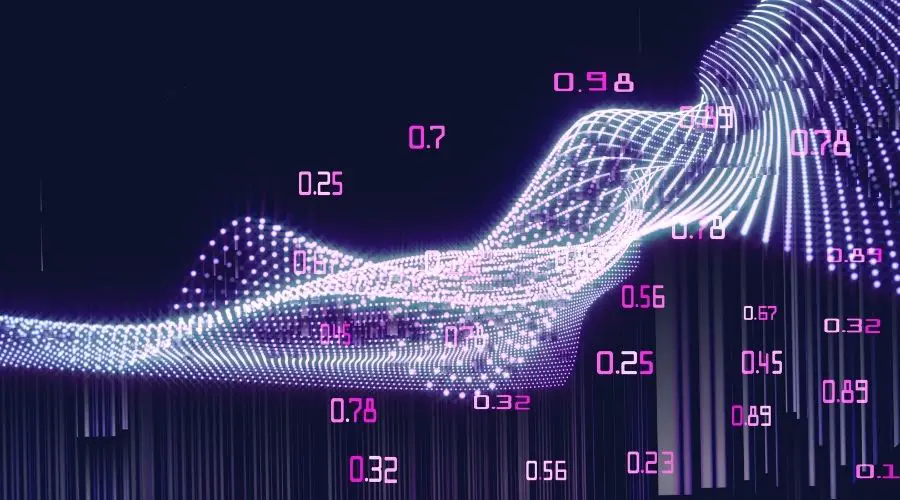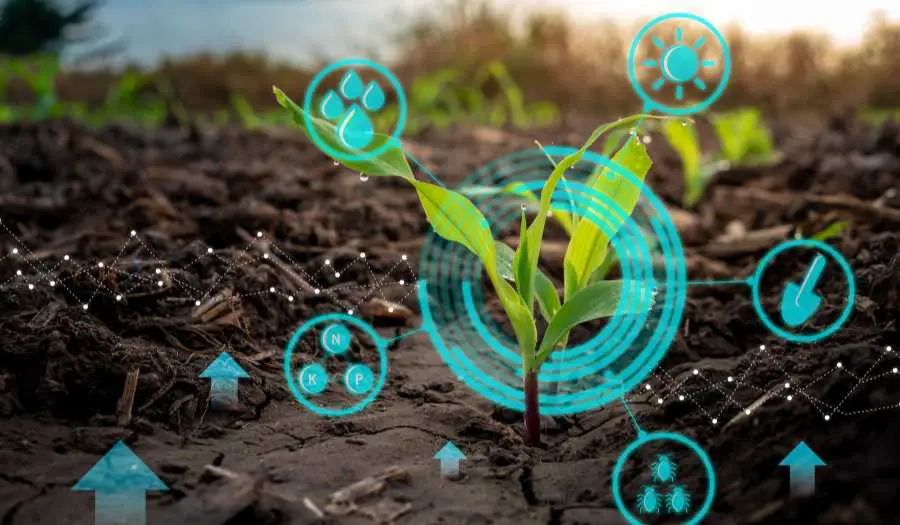In the modern era, technology is all around us, permeating virtually every facet of our lives. It’s hard to imagine what life was like before we were all connected since it seems everything comes with a computer chip in it.
As technology advances, it’s getting more intelligent, which is where elements like artificial intelligence (AI), the internet of things (IoT), and machine learning (ML) come into play.
But, how do these pieces work, and how are they different?
Let’s take a deep dive and discover the similarities and differences between these three components.
Table of Contents
- What is AI?
- What is IoT?
- What is ML?
- Comparing AI vs IOT vs ML
- Combining the Three Elements
- The Bottom Line
What is AI?

Artificial intelligence is, to some, the final result of technological advancement. The idea is to program a machine to learn on its own, much like a human brain would.
In this case, rather than adding new lines of code whenever you want the software to do something, you can simply “teach” it, and it will learn the task by itself without direct input.
Since the human brain conducts 14 billion synapses per minute, replicating and synthesizing this behavior is quite complex.
However, it is theoretically possible to produce computers that are just as smart and adaptable as humans. The only question is, where does it end?
We won’t get into the philosophical debate about AI advancing beyond our comprehension, but we will say that true AI still seems a long way off.
Self-sustaining programs are pretty hard to get right, and there is a lot of trial and error involved.
What is IoT?

The internet of things refers to the interconnectedness of various devices through wireless internet connections. You may have an IoT within your own home.
For example, your smartphone might connect to your security system and control lights and appliances (i.e., a smart fridge). With an IoT, what matters is not whether a device can connect to the broader internet but whether it can communicate with other devices on the same network.
For example, you may be able to turn your coffee machine on remotely from your phone, but you can’t surf the web with it.
One fascinating element of an IoT is how it encapsulates the internet as a whole. When you break it down, the internet is just a series of machines connecting to the same expansive network.
If you store something in the cloud, it’s actually sitting on a server somewhere. If the connection gets severed (i.e., during a power outage), you can’t access those files. The same thing is true with an IoT.
IoT is one of the key drivers in digital transformation, as it enables a business to derive real value and information from data collection via sensors and actuators, and develop smart products, automations, and processes to improve operations.
What is ML?

Machine learning and AI are often used interchangeably, but there is one stark difference. With a true AI, the computer can potentially learn new skills and tasks without any input or stimulus from a person. However, machine learning is all about making predictions based on historical data instead of programming.
To better understand the difference, let’s look at an example.
Suppose you want to predict climate change patterns within a specific region. You can use machine learning software to make these predictions based on climate data from the last 30 years.
Overall, the more information you put into the system, the better it will be at learning and making more accurate guesses.
With AI, you don’t necessarily have to supply data points. Instead, the program constantly collects and processes data, just like the human brain.
So, potentially, an AI program trying to predict weather patterns might seek out data to do its job better. But, it may also decide not to focus on climate predictions, instead learning about different topics as it sees fit.
Comparing AI vs IOT vs ML
Knowing the abstract concept behind AI or ML is just the beginning. It helps to understand how these pieces are used in the real world so you can determine if they’re valuable for your needs.
So, let’s break down when each component works best and how they can work with each other to deliver better results.
Which Processes are AI Best For?
In its current form, AI is actually best for handling mundane and repetitive tasks. Since AI is meant to replicate the human brain, it works well at handling tasks people often perform. Examples can include data entry, reporting, and data collection.
Where AI really shines is its ability to learn from mistakes and correct them without specific user input. So, over time, the software will only become more knowledgeable and efficient, making it even more valuable to a business or organization.
AI software can be deployed in any industry that involves repetitive tasks, such as accounting, insurance, and healthcare. A single piece of software can handle data collection and processing for an entire enterprise.
Which Processes are IOT Best For?
Since the internet of things is a network of connected devices, it works best in areas where devices are a necessary part of the job. One perfect example would be a fulfillment warehouse.
Workers can carry scanners, which enable them to scan items as they fill orders. These devices can also monitor the employee’s position within the warehouse so managers and supervisors can pinpoint someone immediately.
Other devices can also keep track of inventory and placement. For example, a worker can come to a shelf to collect a specific item, and a tracking counter may be on the front of the rack.
As the employee removes the item, the counter updates accordingly based on sensors or user input.
This system works more efficiently because management can see when inventory levels for specific products are getting low and respond accordingly.
Time clocks can also be connected to the IoT, allowing workers to clock in and out from different locations within the warehouse. Scanners may also connect with the time clock to notify employees of breaks or when their shift is about to end.
Overall, you can think of the IoT as a network of data collection points. Then, this information can feed into an AI or ML system to make the operation run more efficiently.
For example, perhaps management sees workers making inefficient pathways while collecting items to fulfill orders.
Based on this data, management might decide to rearrange the warehouse so employees can gather items in less time with fewer steps, resulting in more orders and better accuracy.
Which Processes are ML Best For?
One side effect of living in an interconnected world is that there is a ton of data to collect and process. Now that every device is a data generation machine, other machines have to come along to curate this information to make it more accessible.
If a company has 10 million data points to process, it’s impossible for people to do that accurately. Instead, a machine learning program can handle the task much faster and more precisely than any human.
So, projects that involve big data sets can benefit significantly from ML software.
The most prevalent example of ML in use is social media. Tech companies like Facebook and Twitter can’t manage millions (or billions) of users without machine learning.
These algorithms allow the platforms to adapt to a user’s input to customize the experience to fit their preferences and needs.
We’ve all experienced ML in action at some point.
For example, perhaps you searched for a product on Google, only to see an ad on Facebook or Instagram within a couple of hours afterward.
Similarly, if you start following and interacting with specific types of pages, the algorithm will suggest other pages that fit the same parameters.
Over time, the more data a user puts into the system, the more curated their experience, so the more likely they will continue to interact with the platform.
Healthcare is another industry that uses ML to its advantage. Programs can collect data from hundreds or thousands of patients and use that information to make health-related predictions.
For example, the software may discover that some patients are more likely to develop chronic illnesses than others. Doctors can use that information to prescribe preventative treatments accordingly.
Combining the Three Elements
As you can imagine, AI, ML, and IoT can all work in tandem to produce incredible results.
Let’s use our warehouse example from above to illustrate how these systems can sync.
As we mentioned, the IoT acts as a data collection network, with each device gathering information constantly. The more devices used within the system, the more data collected, and the more accurate the predictions.
Machine learning software can take these data points and turn them into useful information. For example, perhaps the warehouse experiences slow-downs because too many workers are trying to access a specific area or shelf at the same time.
So, the program may recommend redistributing some items so that multiple employees can grab them simultaneously and not cause a backup.
AI would work behind the scenes to ensure the system works as efficiently as possible. The program may handle inventory lists and report generation, or it could process time clocks for all employees.
In this case, the AI system could also notify workers of missed or late punches so that there are fewer errors on the payroll report.
AI may also be able to make recommendations based on data points. For example, perhaps the warehouse could run more efficiently with fewer workers by staggering shifts and changing the layout to flow more smoothly.
Instead of employees walking back and forth trying to find items, the software can optimize routes and tell workers which path to take when fulfilling an order. This way, workers just have to follow instructions and scan items as they pull them.
The Bottom Line
AI, IoT, and ML are poised to reshape the way the world works. As more businesses and organizations take advantage of the technology, it will continue to improve and permeate our lives. We’re excited to see what the future holds!



